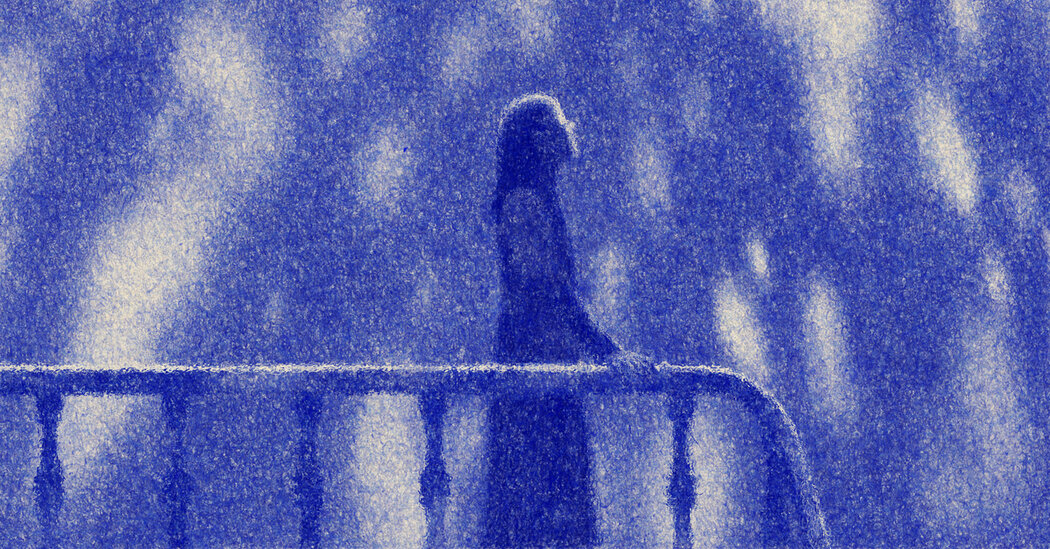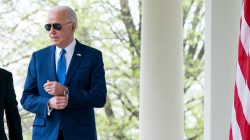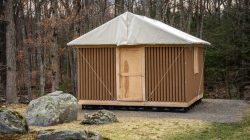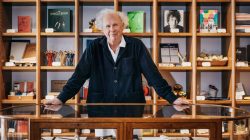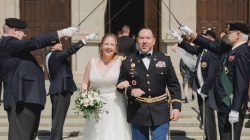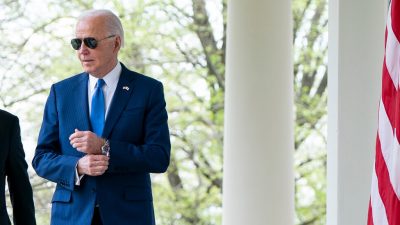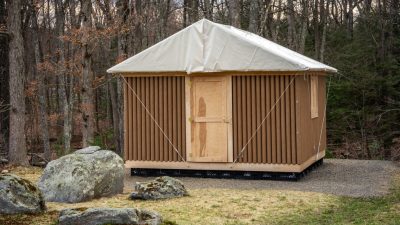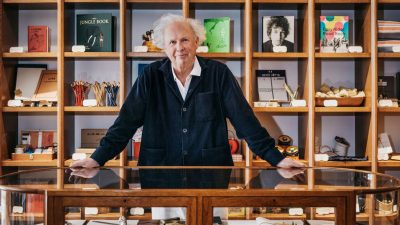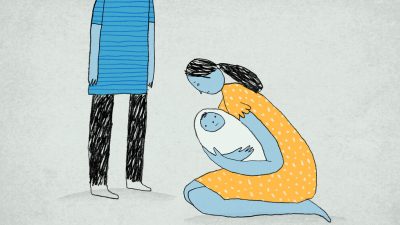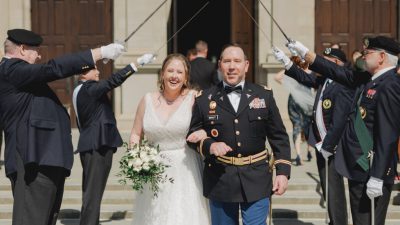I was 15 the first time it happened.
I was staring at the empty apartment and wondering what would happen if the police figured out what my dad had done.
For years, my family had been living in a commercial building — illegal for residential use — above my father’s Pilates studio. He had opened it in 1998 at Scheffel Hall, a New York City landmark on Third Avenue dating to 1895.
Modeled after a 17th-century castle in Heidelberg, Germany, the building has an intricate terra-cotta facade. The interior is a little spooky, with intricately carved dark wood, gargoyles perched near the ceiling, trap doors and dumbwaiters. A golden statue of the Roman goddess Flora watches over the front hall.
Scheffel Hall served as the beer-soaked setting for one of O. Henry’s stories and once housed a jazz club, Fat Tuesday’s. Within one of the walls, my father discovered a trove of framed photographs from a New York that had long ago passed of existence. My favorite was the portrait of Daisy and Violet Hilton, conjoined twins who worked the vaudeville circuit.
My dad adorned the walls with these pictures, along with some large-format, pixelated images of his heroes, among them Gandhi, the Dalai Lama and Gurdjieff. Pilates exercise machines took up space in the main room beneath a stained glass skylight that showed half-moons smoking cigars.
His Pilates studio, the Movement Salon, never made a profit, as far as I know, but for years it functioned as an eccentric gathering spot for people in the neighborhood. I think some of them came just to see my father, who, for 40 years, owned several of the city’s most successful Italian American restaurants. In 2009, when I was 11, he relocated us from our previous apartment to Scheffel Hall after a financially ruinous lawsuit.
We lived there without incident until one evening during my sophomore year in high school, when my dad received a notice from the New York City Department of Buildings. Someone had filed a complaint that there were people living in a building designated for commercial use only, and an inspector would be paying us a visit.
After reading the notice aloud to me and my sister, my father slammed his fist on the rickety computer table, sending mugs and pens jumping. Suddenly, he looked up at us. “We’ll just hide,” he said.
“What?” I said. “I wish we could afford to move out.”
“It’s not an issue of money!” he yelled, although it very much was. He looked around the room. “Sheds,” he said. “We need sheds.”
Within 12 hours, with a porter’s help, he had built a few sheds on the roof. The plan was for us to put all of our belongings up there, to hide the evidence that people were living there.
The beds were the hardest things to move. I remember pushing my mattress through the window of the attic room I shared with my sister, the pressure building on my fingertips as it slipped from my hands and she tried to lug it onto the roof.
“Micky, you gotta push up!” my dad screamed.
In the next phase of the operation, he handed me a black plastic garbage bag. “Take everything off the walls,” he said.
I paused to glance at the framed photograph of my dad with the actor Mickey Rourke, taken at one of his now-shuttered restaurants.
“Don’t worry,” he said. “We’ll put them back … afterward.”
I pulled other pictures off the walls, too: me, grinning, with a missing front tooth, at Disney World; our family, 10 years earlier, feeding birds in Sag Harbor; my sister and me, making snow angels in Gramercy Park. I piled them into the bag, along with medical bills, my black binder from poetry camp and the items on my dad’s night stand, including a gold figurine of Baby Jesus that he kissed every night before bed.
Into other bags went his books and papers, a motley collection that included 200 pages of Wikipedia material on the pineal gland and nonfiction works like “Eros Unredeemed, The Hope: A Guide to Sacred Activism,” “Terra Nova: The Global Revolution and the Healing of Love” and “Why Zebras Don’t Get Ulcers.”
Then my sister and I bagged up the stuff in the attic — colorful shirts from Forever 21, leggings from H & M and makeup from CVS, along with plastic jewelry and school books. I scrawled my name in all-caps on white paper and taped it to the bag that was mine. The only thing we left behind was my unwieldy science project, which we hid in the closet.
Then came what was perhaps the most important part of the ruse: My dad printed signs and posted them all over the building. “EMPLOYEE KITCHEN: PLEASE LEAVE KITCHEN CLEANER THAN YOU FOUND IT,” read the one by the stove. “LAUNDRY: Acupuncture Linens Only!” read the sign above the washing machines.
He put two signs in the attic. The one on the door read, “MASSAGE ROOM 1: SESSION IN PROGRESS, DO NOT ENTER.” And the sign by the closet that concealed my science project read, “MASSAGE SUPPLIES.”
Within three days, we had packed up the whole place. I sat on our stained brown couch and stared into the vacant expanse. I’d be sleeping at a friend’s house that night, but my dad planned to stay at the Movement Salon. I thought about losing him, with visions of the inspector taking him away. Tears streamed out of my eyes, dotting the fabric beneath me.
I was at school when the man from the Department of Buildings came. My father told me about the visit afterward.
When the inspector arrived, my dad said that a “crazy lady across the street” was the one who had called in the complaint, adding that there was nothing to it. Then he looked on as the man went from room to room. Everything was going according to plan until the inspector reached my attic room. He stepped across the creaky floor toward the closet, approaching the “MASSAGE SUPPLIES” sign.
“Oh, give me a break!” my dad said.
The inspector paused.
“You’re really going to turn over every last tiny thing?”
The inspector nodded and turned away. Moments later, on the main floor, he scrawled something on a white form and handed it to my father.
“You passed,” he said.
Two years later, when I was 17, my dad learned he had esophageal cancer. A few days after the diagnosis, he became convinced that the plaster ceiling outside the attic bedroom concealed a skylight. He cut open the ceiling. The dust infiltrated every room, shoe and lung in the house, but he was right. His efforts revealed a stained glass skylight that transformed my gloomy stairwell into a rainbow jewel box of miraculous pinks and blues.
Micaela Macagnone is a writer in New York.
Sumber: www.nytimes.com
